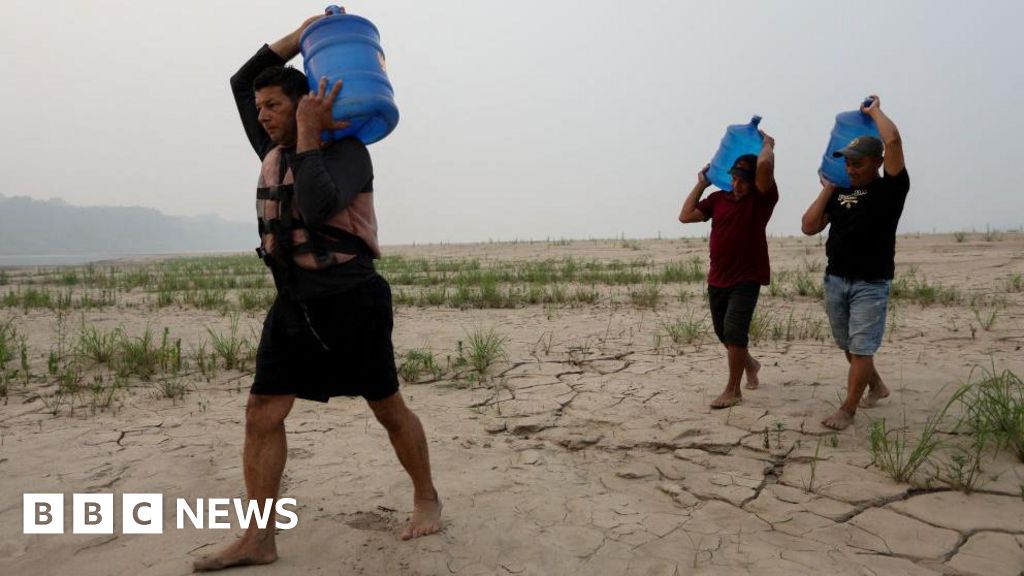
UN Report: Global Drought Crisis Reaches Unprecedented Levels
A new UN-backed report paints a stark picture of a worsening global drought crisis, describing it as the worst ever seen and calling for urgent action. The report highlights the devastating impacts on human lives, economies, and ecosystems, emphasizing the need for improved preparedness and drought resilience.
A Global Catastrophe: Unprecedented Drought Impacts
A comprehensive report, released at COP28 and produced in collaboration with the U.S. National Drought Mitigation Center and the UN Convention to Combat Desertification (UNCCD), details the devastating impacts of widespread and severe drought events since 2023. The report’s findings are alarming, highlighting the scale and severity of the crisis. Co-author Dr. Mark Svoboda, founding director of the U.S. National Drought Mitigation Center, described the situation as “a slow-moving global catastrophe, the worst I’ve ever seen.” The report emphasizes the urgent need for systematic monitoring of drought’s effects on human lives, livelihoods, and ecosystem health.
The report details the widespread effects of drought across five continents, impacting an estimated 1.84 billion people—nearly one in four people worldwide—in 2022 and 2023. The impacts are far-reaching, spanning food insecurity, water scarcity, energy crises, and significant economic losses. The report specifically highlights the devastating consequences in regions such as the Horn of Africa, the Southwest U.S., and China’s Yangtze River Basin. The report underscores that no country is immune to the intensifying effects of drought, a “slow onset, silent killer” that gradually depletes resources and devastates lives. The report emphasizes the interconnectedness of drought with other challenges, such as poverty and ecosystem collapse, highlighting how drought exacerbates existing vulnerabilities.
The report’s findings are particularly alarming in the context of climate change. Rising global temperatures are identified as a key driver of more frequent and severe droughts. The impact of El Niño, a natural climate pattern that often leads to drier conditions in several regions, further compounded the effects of climate change during the period covered by the report.
Humanitarian and Economic Consequences: A Multifaceted Crisis
The report reveals the devastating human cost of the drought crisis. The Horn of Africa experienced its worst drought in 70 years by January 2023, following years of failed rainy seasons. In Somalia alone, an estimated 43,000 people died from drought-linked hunger in 2022. The impacts extended beyond human populations, with African wildlife suffering as well. Hippos became stranded in drying riverbeds in Botswana, and elephants were culled in Zimbabwe and Namibia to prevent overgrazing and provide food for communities.
The economic consequences are equally severe. The report cites a sharp reduction in Spain’s olive crop due to drought and record heat, illustrating the impact on agriculture and global trade. Record low water levels in the Amazon basin disrupted drinking water supplies for thousands and harmed the local ecosystem, affecting fish populations and endangering dolphins. The Panama Canal experienced significantly reduced water levels, impacting daily ship transits, demonstrating the far-reaching implications for global trade.
The report also highlights the disproportionate impact on vulnerable populations, particularly women. In drought-stricken regions of Eastern Africa, forced child marriages more than doubled as families resorted to desperate measures to survive. The report calls these situations “signs of severe crisis.”
The Way Forward: Preparedness and Resilience
The report emphasizes the need for a fundamental shift in how we approach drought. It recommends that governments prepare for a “new normal” characterized by more frequent and severe drought events. Key recommendations include strengthening early warning systems, investing in drought-resistant infrastructure, and promoting sustainable land and water management practices. The report stresses the importance of international cooperation and resource mobilization to address this global challenge. It concludes by emphasizing that drought is not merely a weather event but a complex multifaceted crisis demanding urgent and comprehensive action.
Key Takeaways
- A UN report reveals an unprecedented global drought crisis, described as the worst ever seen.
- The crisis has resulted in widespread food insecurity, water scarcity, economic losses, and significant impacts on ecosystems.
- Climate change and El Niño are identified as key drivers of the crisis.
- The most vulnerable populations, including women and children, are disproportionately affected.
- The report calls for urgent action, including strengthened early warning systems and investments in drought resilience measures.
